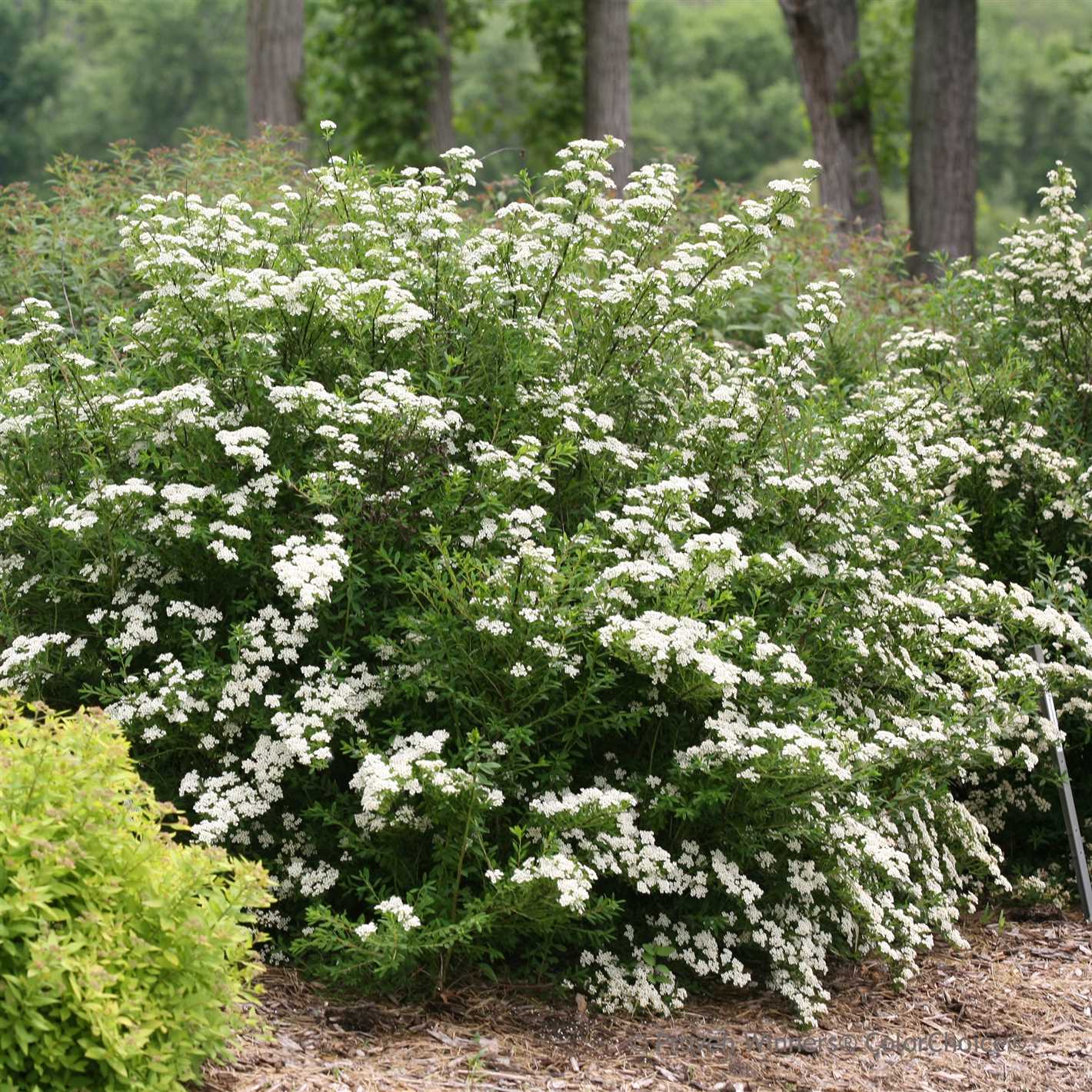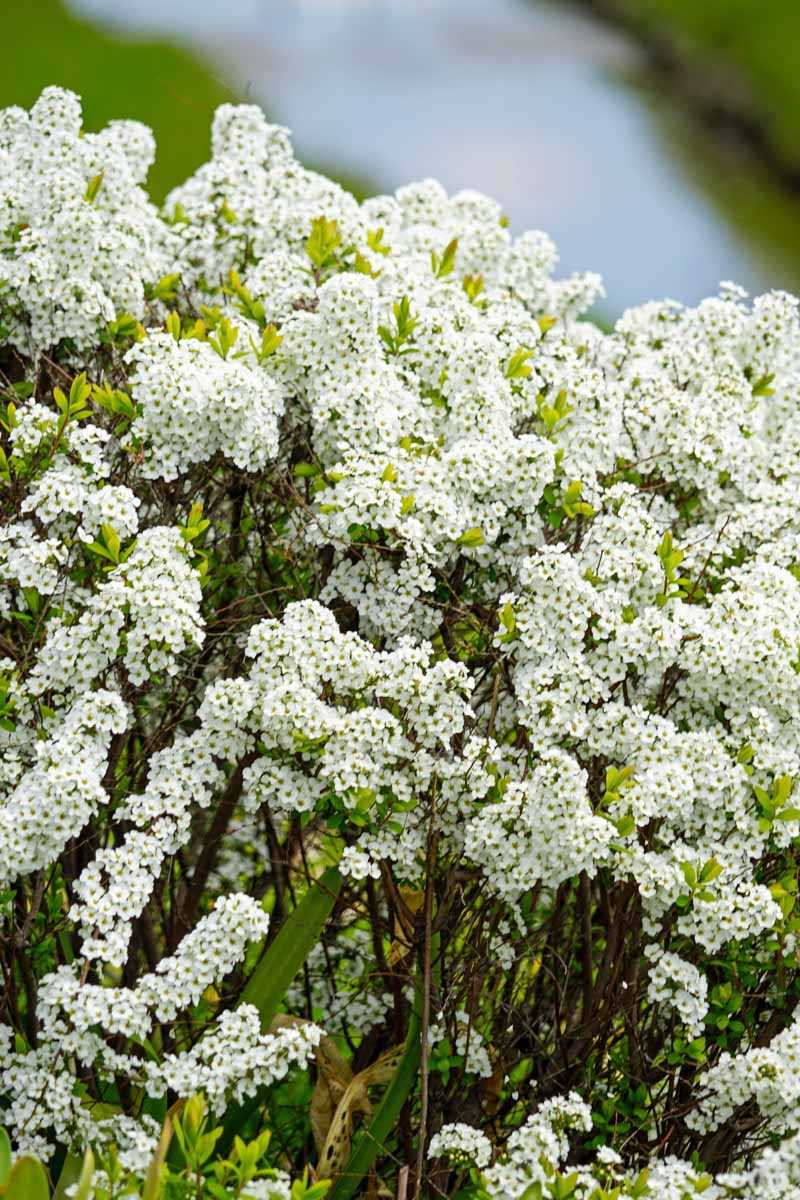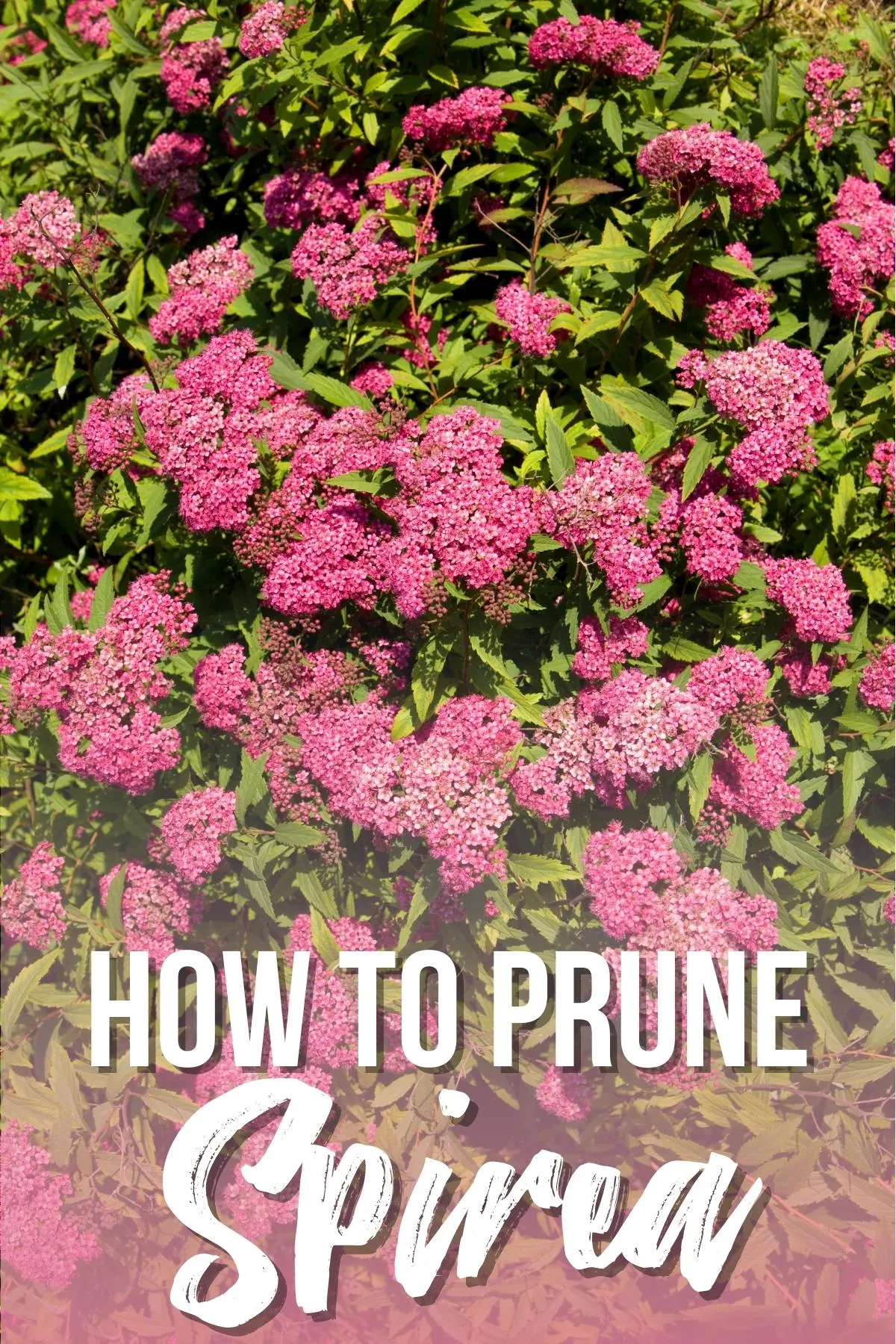- Planting and Care of Grey Spirea
- Planting
- Care
- How to Plant Grey Spirea
- 1. Choose the right location
- 2. Prepare the soil
- 3. Dig the planting hole
- 4. Place and position the plant
- 5. Backfill and water
- 6. Mulch and maintain
- Choosing the Right Location for Grey Spirea
- Light Requirements
- Soil Conditions
- Climate Considerations
- Spacing
- Watering and Fertilizing Grey Spirea
- Watering
- Fertilizing
- Pruning Grey Spirea
- When to Prune
- Tools for Pruning
- Pruning Steps
- Care After Pruning
- Protecting Grey Spirea from Pests and Diseases
- Pests
- Diseases
- Conclusion
- Description of Grey Spirea Varieties
- Cultivars of Grey Spirea
- Characteristics and Features of Grey Spirea Varieties
- 1. Artemisia schmidtiana ‘Silver Mound’
- 2. Artemisia stelleriana ‘Boughton Silver’
- 3. Artemisia ludoviciana ‘Silver King’
- 4. Artemisia versicolor ‘Sea Foam’
- 5. Artemisia schmidtiana ‘Nana’
- 6. Artemisia cana
- Questions and Answers:
- What is grey spirea?
- How tall does grey spirea grow?
- When should I plant grey spirea?
- How often should I water grey spirea?
- Can I prune grey spirea?
- Videos: Ask the Experts about Spirea – a great shrub for your landscape
The Grey Spirea, also known as the Meadowsweet, is a beautiful flowering plant that belongs to the Rosaceae family. It is native to Europe and Asia and is widely cultivated for its attractive foliage and stunning flowers. The Grey Spirea is an excellent addition to any garden or landscape due to its versatility and low maintenance requirements.
When it comes to planting Grey Spirea, it is best to choose a sunny spot in your garden with well-draining soil. The plant can tolerate a wide range of soil types, but it thrives in moist, rich soil. Before planting, make sure to prepare the soil by removing any weeds or debris and adding organic matter such as compost or well-rotted manure. Once the soil is prepared, dig a hole slightly larger than the root ball of the plant and place the Grey Spirea in the hole, making sure the crown of the plant is level with the soil surface.
Water the plant thoroughly after planting and keep the soil evenly moist during the growing season. Grey Spirea is relatively drought-tolerant once established, but regular watering will help promote healthy growth and abundant flowering. Additionally, mulching around the plant will help conserve moisture and suppress weed growth.
Grey Spirea is available in several varieties, each with its unique characteristics. One of the most popular varieties is ‘Flore Pleno,’ which features double flowers and a compact growth habit. ‘Little Princess’ is another sought-after variety known for its dwarf size and abundant pink flowers. Another notable variety is ‘Goldflame,’ which boasts vibrant yellow and orange foliage that turns reddish-bronze in the fall. Whatever variety you choose, Grey Spirea is sure to brighten up your garden and attract butterflies and bees with its beautiful flowers.
Planting and Care of Grey Spirea
Grey Spirea is a beautiful and versatile perennial plant that can add elegance and charm to any garden. While it may seem delicate, Grey Spirea is actually a hardy plant that can withstand a variety of growing conditions. Here are some tips for planting and caring for Grey Spirea:
Planting
- Choose a location that receives full sun or partial shade. Grey Spirea can tolerate a wide range of soil types, but it prefers well-draining soil.
- Prepare the planting area by removing any weeds and loosening the soil with a garden fork or tiller.
- Dig a hole that is slightly larger and deeper than the root ball of the Grey Spirea plant.
- Place the plant in the hole, making sure that the crown is level with the soil surface.
- Backfill the hole with soil, gently firming it around the roots of the plant.
- Water the newly planted Grey Spirea thoroughly to settle the soil and provide moisture to the roots.
Care
- Water Grey Spirea regularly, especially during dry periods. Keep the soil consistently moist, but not waterlogged.
- Apply a layer of mulch around the base of the plant to help retain moisture and suppress weed growth.
- Prune Grey Spirea in late winter or early spring to promote healthy growth and maintain its shape. Remove any dead or damaged branches, as well as any crossing or overcrowded branches.
- Fertilize Grey Spirea once a year in early spring with a balanced, slow-release fertilizer. Follow the manufacturer’s instructions for application rates.
- Monitor Grey Spirea for common pests and diseases, such as aphids or powdery mildew. Treat any issues promptly with appropriate insecticides or fungicides.
By following these tips for planting and caring for Grey Spirea, you can ensure that this beautiful plant thrives in your garden and continues to bring joy for years to come.
How to Plant Grey Spirea
Grey Spirea, also known as Ashe’s Spirea, is a beautiful flowering shrub that can add color and texture to your garden. Here are some steps to help you successfully plant Grey Spirea:
1. Choose the right location
Grey Spirea prefers full sun or partial shade, so select a location in your garden that receives at least 6 hours of sunlight each day. The soil should be well-draining and fertile to ensure the plant’s healthy growth.
2. Prepare the soil
Before planting, prepare the soil by removing any weeds, rocks, or debris. Loosen the soil with a garden fork or tiller to improve drainage and create a loose bed for the roots to establish.
3. Dig the planting hole

Dig a hole that is slightly larger and deeper than the root ball of the Grey Spirea plant. This will allow enough space for the roots to spread out comfortably. Make sure the hole is wide enough to accommodate the entire root system without bending or crowding the roots.
4. Place and position the plant
Carefully remove the Grey Spirea plant from its container and gently loosen the roots. Place the plant in the center of the planting hole, making sure it is at the same depth as it was in the container. Position the plant so that it is upright and facing the desired direction.
5. Backfill and water

Fill the planting hole with soil, gently firming it around the roots as you go. Avoid packing the soil too tightly, as this can restrict root growth. After planting, water the Grey Spirea thoroughly to settle the soil and remove any air pockets. Provide enough water to saturate the root zone.
6. Mulch and maintain
Apply a layer of organic mulch around the base of the Grey Spirea plant, leaving a small space around the stem to prevent rot. Mulching helps retain moisture, suppress weeds, and improve overall soil health. Regularly water and maintain the plant to ensure its continued growth and vitality.
Follow these planting steps and provide proper care, and your Grey Spirea plant will flourish in your garden, adding beauty and interest to your landscape.
Choosing the Right Location for Grey Spirea

The grey spirea plant, also known as Spirea thunbergii ‘Ogon’, is a beautiful and versatile shrub that can bring color and texture to any garden. When choosing a location for your grey spirea, it’s important to consider its specific needs to ensure that it thrives and grows to its full potential.
Light Requirements
Grey spirea is a sun-loving plant that requires at least 6 hours of direct sunlight per day to thrive. When selecting a location for your grey spirea, choose an area that receives full sun or partial shade. Avoid planting it in a spot that receives less than 6 hours of sunlight, as this can result in weak growth and fewer flowers.
Soil Conditions
Grey spirea prefers well-draining soil that is moderately fertile. It can tolerate a wide range of soil types, including sandy, loamy, and clay soils. However, it is important to avoid planting grey spirea in areas with heavy or poorly drained soil, as this can lead to root rot and other moisture-related problems.
Before planting, prepare the soil by adding organic matter such as compost or well-rotted manure. This will improve soil structure, drainage, and fertility, creating an ideal growing environment for your grey spirea.
Climate Considerations
Grey spirea is a hardy plant that can tolerate a wide range of climatic conditions. It can thrive in USDA hardiness zones 4 to 8, making it suitable for various regions across the United States.
However, it is important to consider your specific climate when choosing a location for your grey spirea. In hotter climates, provide some afternoon shade to protect the plant from excessive heat. In colder climates, ensure that the grey spirea is planted in a location that is sheltered from strong winds and frost, as this can damage the delicate foliage and flowers.
Spacing
When planting grey spirea, make sure to space the shrubs properly to allow for adequate air circulation and growth. The recommended spacing for grey spirea is around 4 to 6 feet apart. This will prevent overcrowding, reduce the risk of disease, and allow each plant to receive proper sunlight and nutrients.
To ensure that your grey spirea flourishes, choose a location that meets its light requirements, has well-draining soil, considers climate conditions, and allows for proper spacing. With the right conditions, your grey spirea will thrive and bring beauty to your garden for years to come.
Watering and Fertilizing Grey Spirea
Watering and fertilizing are essential tasks in maintaining the health and beauty of grey spirea plants. Proper watering and fertilization can promote growth, improve flowering, and prevent diseases. Here are some tips on how to water and fertilize your grey spirea:
Watering
- Grey spirea plants require regular watering, especially during dry periods. They prefer moist soil but avoid overwatering as it can lead to root rot.
- Water the plants deeply, ensuring that the water reaches the roots. Shallow watering may cause the roots to grow near the surface, making the plant more susceptible to drought.
- Monitor the moisture level of the soil by inserting your finger into the soil. If the top inch feels dry, it’s time to water.
- Water the plants in the early morning or late afternoon to minimize water loss due to evaporation.
- Consider using a soaker hose or drip irrigation system to provide a slow and steady water supply directly to the roots.
Fertilizing
- Fertilize grey spirea plants in the spring, just as new growth begins to emerge. Choose a balanced, slow-release fertilizer specifically formulated for flowering shrubs.
- Follow the manufacturer’s instructions for application rates and methods. Typically, you can sprinkle the fertilizer around the base of the plant and gently work it into the soil.
- Avoid applying fertilizer too close to the stem, as it can burn the plant.
- Water the plants after fertilizing to help activate the nutrients and prevent any potential burning.
- Repeat the fertilization process once or twice during the growing season, following the same instructions as the initial application.
By providing adequate water and nutrients, your grey spirea plants will thrive and reward you with their beautiful blooms and foliage.
Pruning Grey Spirea
Pruning is an important part of caring for grey spirea plants. Proper pruning helps to maintain the plant’s shape, promote healthy growth, and encourage the development of more flowers. Here are some tips for pruning grey spirea:
When to Prune
The best time to prune grey spirea is in late winter or early spring, before new growth begins. This is when the plant is dormant, and pruning at this time helps to stimulate new growth for the upcoming season.
Tools for Pruning
To prune grey spirea, you will need a pair of sharp pruning shears or secateurs. Make sure the blades are clean and sharp to make clean cuts and minimize damage to the plant.
Pruning Steps
- Start by removing any dead or damaged branches. Cut them back to the base or to a healthy bud or side shoot.
- Next, thin out the plant by removing any overcrowded or crossing branches. This helps to improve airflow and sunlight penetration, which can reduce the risk of disease and promote overall plant health.
- Trim back any excessively long or unruly branches to maintain the desired shape of the plant. Cut just above a bud or side shoot to encourage new growth in that area.
- If you want to promote more flowers, you can also prune grey spirea immediately after the first flush of flowers fades. Cut back the spent flower heads to a healthy bud or side shoot, which will encourage the development of new flower buds.
Care After Pruning

After pruning, make sure to give the grey spirea plant proper care to help it recover and continue to thrive. Water the plant thoroughly and provide regular fertilization to support new growth. Mulching around the base of the plant can also help to conserve moisture and suppress weed growth.
Pruning grey spirea is a simple but important task that can contribute to the health and beauty of your plant. By following these pruning tips, you can enjoy a beautiful and well-maintained grey spirea in your garden.
Protecting Grey Spirea from Pests and Diseases
Grey spirea is a hardy plant that is relatively resistant to pests and diseases. However, there are a few common issues that can affect the health of your grey spirea. By taking preventative measures and knowing how to identify and treat these problems, you can help ensure the longevity and beauty of your grey spirea plant.
Pests
While grey spirea is not highly susceptible to pests, there are a few insect pests that can sometimes cause damage. These include:
- Aphids: These tiny, pear-shaped insects suck sap from the leaves and stems of the plant, causing them to curl and deform. To control aphids, you can spray the plant with a mild insecticidal soap or use a strong jet of water to wash them off.
- Spider mites: These tiny pests can cause yellowing of leaves, webbing, and stunted growth. You can control spider mites by regularly spraying the plant with water and using insecticidal soap if necessary.
- Sawflies: These insects chew on the leaves of the grey spirea, causing skeletonized patches. Handpicking the larvae off the plant and using insecticidal soap can help control sawflies.
Diseases
Grey spirea is generally resistant to most diseases, but there are a few issues to watch out for:
- Powdery mildew: This fungal disease appears as a white powdery coating on the leaves and can stunt the growth of the plant. Keeping the plant well-ventilated and avoiding overhead watering can help prevent powdery mildew. If necessary, you can use a fungicide labeled for powdery mildew control.
- Root rot: Overwatering or poorly drained soil can lead to root rot, a condition where the roots become damaged and the plant becomes weak and discolored. Avoid over-watering your grey spirea and ensure it is planted in well-drained soil.
Conclusion
By being vigilant and taking steps to protect your grey spirea from pests and diseases, you can help ensure it remains healthy and vibrant. Remember to regularly inspect your plants, provide proper care, and take prompt action if any issues arise. With proper attention, your grey spirea can thrive and add beautiful color and foliage to your garden for years to come.
Description of Grey Spirea Varieties
Grey spirea, also known as “Astilbe x arendsii”, is a versatile perennial plant that comes in various varieties, each with its own unique characteristics. Here are a few popular varieties of grey spirea:
Fanal: This variety of grey spirea has vibrant deep red flowers that make a striking contrast against its dark green foliage. It typically blooms in late spring and early summer, adding a pop of color to any garden or landscape.
Deutschland: Known for its white flowers, the Deutschland grey spirea variety is a classic choice for many gardeners. The pure white blossoms are densely packed on tall, erect stems, creating a beautiful and elegant display when in full bloom.
Peach Blossom: As the name suggests, this variety of grey spirea features soft peach-colored flowers that are a delight to the eyes. The delicate blossoms add a touch of warmth and femininity to any garden, making them a popular choice among garden enthusiasts.
Glow: The Glow grey spirea variety is known for its vibrant pink flowers that bring a cheerful and vibrant energy to a garden. The flowers gradually fade to a lighter shade as they age, creating a stunning ombre effect when viewed as a whole.
These are just a few examples of the many available varieties of grey spirea. Each variety has its own unique characteristics that can add beauty and diversity to any garden or landscape. Whether you prefer bold reds, pure whites, soft peaches, or vibrant pinks, there is a grey spirea variety to suit your taste and style.
Cultivars of Grey Spirea
1. Silver Mound (Artemisia schmidtiana “Silver Mound”)
Silver Mound is a small and compact variety of grey spirea. It forms a dense mound of finely dissected, silver-gray foliage. The foliage is highly aromatic and emits a pleasant fragrance when touched or brushed against. Silver Mound is a popular choice for rock gardens, borders, and container planting.
2. Powis Castle (Artemisia arborescens “Powis Castle”)
Powis Castle is a vigorous and upright variety of grey spirea. It has fern-like, silver-gray foliage that is highly aromatic. The plant forms a dense mound or clump, which can reach a height and width of 2-3 feet. Powis Castle is drought tolerant and requires well-drained soil. It is commonly used in landscape design for its silvery foliage and low maintenance requirements.
3. Silver King (Artemisia ludoviciana “Silver King”)
Silver King is a tall and upright variety of grey spirea. It grows to a height of 2-3 feet and has silvery-gray foliage that is slightly serrated. The plant produces small, yellow flowers in late summer. Silver King is a hardy variety that can tolerate a wide range of soil conditions. It is often used as a background or focal point in border plantings.
4. Silver Carpet (Artemisia schmidtiana “Nana”)
Silver Carpet is a ground-covering variety of grey spirea. It forms a dense mat of finely textured, silver-gray foliage. The plant is low-growing and spreads rapidly, making it an excellent choice for filling in gaps or covering large areas. Silver Carpet is drought tolerant and can withstand poor soil conditions. It is commonly used as a weed suppressor or as a border plant.
5. Wormwood (Artemisia absinthium)
Wormwood is a perennial herb that belongs to the grey spirea family. It has silvery-gray foliage with deeply cut leaves. Wormwood is known for its medicinal properties and has been used for centuries in traditional medicine. It is also cultivated as an ornamental plant for its attractive foliage. Wormwood prefers full sun and well-drained soil.
| Name | Scientific Name | Description |
|---|---|---|
| Silver Mound | Artemisia schmidtiana “Silver Mound” | Small and compact variety with finely dissected, silver-gray foliage. |
| Powis Castle | Artemisia arborescens “Powis Castle” | Vigorous and upright variety with fern-like, silver-gray foliage. |
| Silver King | Artemisia ludoviciana “Silver King” | Tall and upright variety with silvery-gray foliage and small yellow flowers. |
| Silver Carpet | Artemisia schmidtiana “Nana” | Ground-covering variety with dense mat of silver-gray foliage. |
| Wormwood | Artemisia absinthium | Perennial herb with silvery-gray foliage and medicinal properties. |
Characteristics and Features of Grey Spirea Varieties
The grey spirea, also known as the silvermound or silver mound, is a popular perennial plant that belongs to the Asteraceae family. It is characterized by its unique silver-gray foliage and compact, mound-shaped growth habit. There are several varieties of grey spirea, each with its own distinct characteristics and features. Here are some of the noteworthy varieties:
1. Artemisia schmidtiana ‘Silver Mound’
This variety is one of the most well-known and widely grown grey spirea varieties. It has finely textured silver-gray leaves that form a dense mound, giving it a compact appearance. ‘Silver Mound’ grows to a height of around 8-12 inches and spreads up to 1-2 feet. It is an excellent choice for rock gardens, border edges, and containers.
2. Artemisia stelleriana ‘Boughton Silver’
Characterized by its fuzzy, silvery foliage, ‘Boughton Silver’ is another attractive grey spirea variety. It has a spreading growth habit and forms a dense mat of foliage. This variety can tolerate poor soil conditions and is drought-tolerant once established. ‘Boughton Silver’ is ideal for ground cover, borders, and mixed perennial beds.
3. Artemisia ludoviciana ‘Silver King’
‘Silver King’ is a taller grey spirea variety, reaching a height of about 2-3 feet. It has elongated, silver-gray leaves that provide an elegant, airy effect when planted en masse. This variety is deer-resistant and low-maintenance, making it suitable for naturalistic landscapes, cottage gardens, and prairie-style plantings.
4. Artemisia versicolor ‘Sea Foam’
‘Sea Foam’ is a unique grey spirea variety with a cascading habit. It features finely divided silver-gray leaves that create a frothy, cloud-like appearance. This variety is well-suited for slopes, cascading over walls, or spilling out of containers. ‘Sea Foam’ is also a great choice for adding texture and contrast to mixed plantings.
5. Artemisia schmidtiana ‘Nana’
‘Nana’ is a dwarf grey spirea variety that forms a tight, compact mound of silver-gray foliage. It grows to a height of only 4-6 inches and spreads up to 8-12 inches. ‘Nana’ is great for small spaces, rock gardens, and in between stepping stones. It provides a neat, low-maintenance ground cover.
6. Artemisia cana
Artemisia cana, commonly known as silver sagebrush, is a grey spirea variety native to North America. It has soft, silver-gray leaves that are aromatic when crushed. This variety is tolerant of harsh conditions, including heat, drought, and poor soil. Silver sagebrush is often used in native plantings, xeriscapes, and naturalistic gardens.
Overall, grey spirea varieties are valued for their unique silver-gray foliage, compact growth habit, and adaptability to various growing conditions. Whether used as accents, ground covers, or fillers, these varieties provide beauty, texture, and interest to garden landscapes.
Questions and Answers:
What is grey spirea?
Grey spirea, also known as grey-headed or Ashy spirea, is a small deciduous shrub that belongs to the Rosaceae family. It is native to Europe and Asia and is valued for its attractive foliage and delicate, pinkish-white flowers.
How tall does grey spirea grow?
Grey spirea typically grows to a height of 2 to 3 feet, with a spread of 3 to 4 feet. However, there are some dwarf varieties that stay smaller and compact, reaching only around 1 foot in height.
When should I plant grey spirea?
Grey spirea can be planted in the spring or fall. It is best to avoid planting during extreme heat or cold, as the plant may struggle to establish itself. Planting in well-drained soil with full sun or partial shade is recommended for optimal growth.
How often should I water grey spirea?
Grey spirea should be watered regularly during the first year after planting to help it establish a strong root system. After that, it is relatively drought-tolerant and only needs watering during periods of prolonged drought. It is important to avoid overwatering, as this can lead to root rot.
Can I prune grey spirea?
Yes, pruning grey spirea is recommended to help maintain its shape and promote healthy growth. It is best to prune in the early spring before new growth begins. Removing dead or damaged branches and thinning out overcrowded growth can help improve air circulation and prevent disease.







